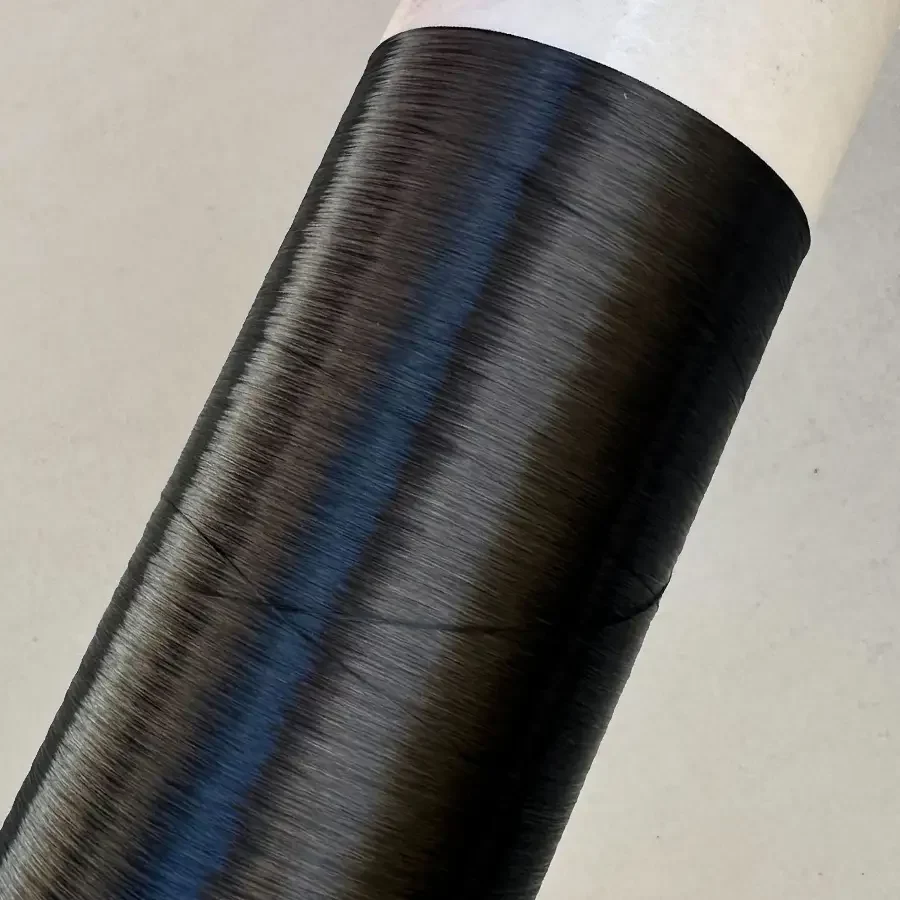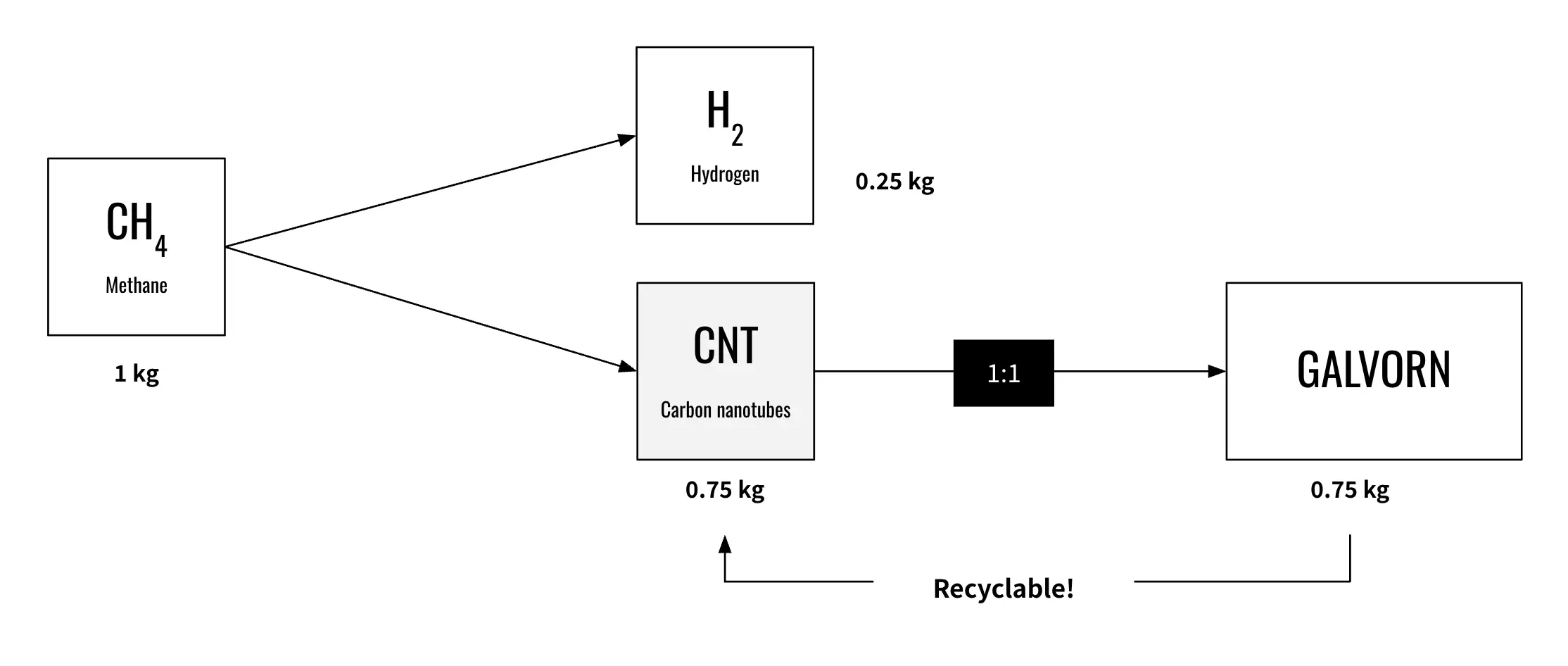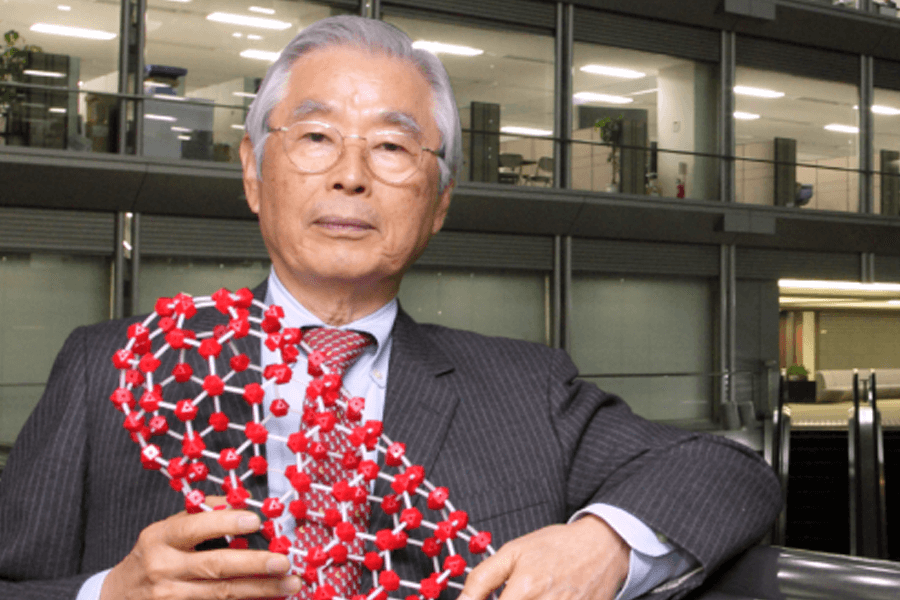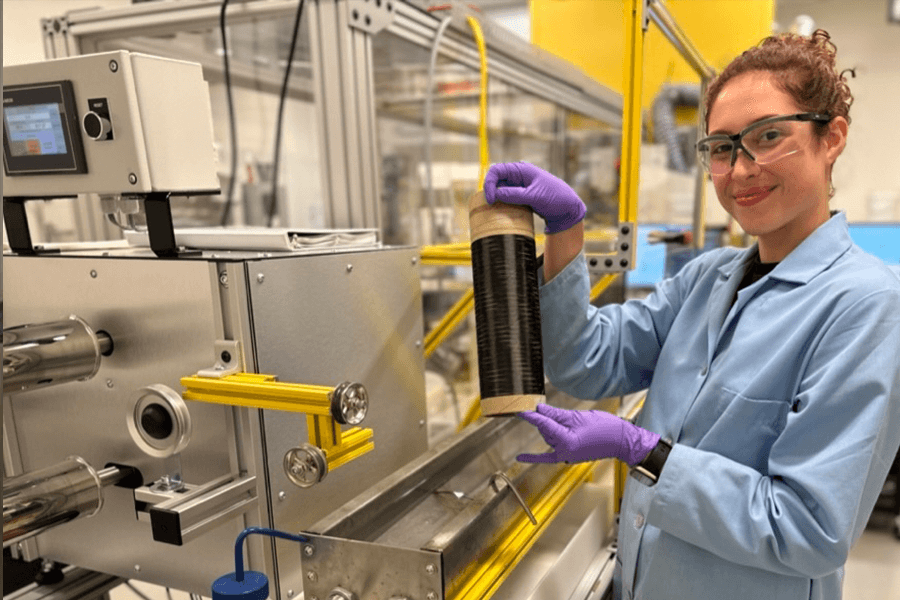DexMat produces Galvorn
The strongest, lightest, and most flexible conductive material on the planet.
At scale, Galvorn production is higher-performing, less energy-intensive, less expensive, and more geopolitically resilient than today’s most pervasive metals. With Galvorn we can enable energy and materials dominance, as well as do right by our planet.
Originally invented by Nobel laureates for high performance in space, our customers are building better products using our material.

Our mission
Make Galvorn accessible and transform our material world.
DexMat produces Galvorn fibers with unmatched properties at unbeatable techno-economic scalability. Customers tell us, ‘Your material is amazing, you need to make more of it, and it needs to cost less.’ DexMat was founded on the premise that we can make high-performance Galvorn accessible to all.
Our specific process is proprietary, but wet spinning as a general manufacturing approach is well-established. Numerous polymeric and cellulosic wet-spun products are already produced on a large scale. We can leverage existing knowledge to scale up production efficiently while maintaining our competitive edge in material properties.
Beyond our patents, DexMat has accumulated extensive trade secrets. They further enhance our ability to make Galvorn efficiently, at scale, and with superior properties.
Our approach
We produce materials not by combusting carbon, but capturing it into a high-value advanced carbon material. Clean hydrogen is a byproduct.
With methane pyrolysis we can permanently embody carbon into Galvorn and more efficiently produce clean hydrogen. "Turquoise" hydrogen is produced through methane pyrolysis, splitting the methane (CH4) into hydrogen (H2) and solid carbon (C). This method of hydrogen production is four times more efficient than green hydrogen production.
Methane pyrolysis can be used to produce carbon nanotubes (CNTs), the feedstock required to produce high-performance Galvorn. Galvorn is much more energy efficient to produce than steel, aluminum, and copper. With its impressive properties, Galvorn can displace these metals, as well as other energy-intensive materials, like carbon fiber and Kevlar.

Founded on more than 20 years of R&D

1991
Carbon nanotubes promise new horizons for advanced materials
Carbon nanotubes (CNTs) were discovered in 1991 by Sumio Iijima (above) with great fanfare owing to their incredible properties at the nanoscale. Over the years, market hope turned to hype, which turned to disillusionment as the inherent difficulty of working with CNTs limited the number of applications in which they were successfully leveraged to make a tangible impact.

2001
Research into maintaining properties at macroscale with fiber spinning begins
In 2001, Prof. Richard Smalley (1996 Nobel Prize Winner in Chemistry) began trying to use liquid processing to spin carbon nanotubes into fibers that retained the tubes’ electrical and mechanical properties over kilometer lengths. Prof. Matteo Pasquali, now DexMat Co-Founder and Chief Science Advisor, was then part of the project from the beginning and took over after Smalley’s passing in 2005.

2013
First demonstration of high conductivity and strength in carbon nanotube fibers
In 2013 Prof. Matteo Pasquali led a team, which then included Dmitri Tsentalovich, PhD, now DexMat Co-Founder and CTO, as well as Colin Young, PhD, now DexMat Senior Research Scientist. Together with the Dutch firm Teijin Aramid, the U.S. Air Force, and Israel's Technion Institute they unveiled new CNT fibers that looked and acted like textile threads and conducted electricity and heat like a metal wire.

2023
Following its 2023 raise DexMat demonstrates 20x scale up and 96% cost decrease
DexMat was founded in 2019 and remained solely grant-funded until 2023. Process improvements, along with new IP licensed from Rice University, enabled DexMat to produce Galvorn faster, cheaper, and more sustainably.